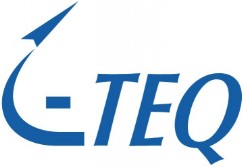IMPATT Diodes

- High output power, pulse output power 10- 20 Watt
- Compact size
- High reliability
- IMPATT Diodes (Pulse and CW) are waveguide mountable and hermetically sealed
|
Pulse
IMPATT Diodes |
|||
|
Operating
frequency range, GHz |
35 |
92-96 |
120-140 |
|
Pulse Power,
Watt (pulse duration 100 nsec) |
10-20 |
10 |
3-5 |
|
Breakdown
voltage, V |
34-40 |
16 |
10-12 |
|
Pulse current,
A |
8-15 |
10-18 |
10-18 |
|
Diode
capacitance, pF |
10-26 |
6-8 |
6-8 |
|
Package
capacitance, pF |
0.2 |
0.15 |
0.08 |
|
Ruby sleeve dimensions,
mm |
1.2x0.7x0.4 |
0.8x0.4x0.2 |
0.4x0.2x0.15 |
|
CW
IMPATT Diodes |
|||
|
Operating
frequency range, GHz |
30-37 |
92-96 |
120-140 |
|
Minimum CW
power, mW |
50-400 |
50-150 |
10-30 |
|
Breakdown
voltage, V |
34-42 |
16-18 |
13-15 |
|
Operating
current, mA |
80-150 |
150-200 |
200-270 |
|
Operating
voltage, V, max |
10 |
4 |
4 |
|
Diode
capacitance, pF |
1.3-2.0 |
0.7-0.9 |
0.6-0.8 |
|
Package
capacitance, pF |
0.2 |
0.12 |
0.08 |
|
Ruby sleeve dimensions,
mm |
1.2x0.7x0.4 |
0.5x0.2x0.15 |
0.4x0.2x0.15 |
